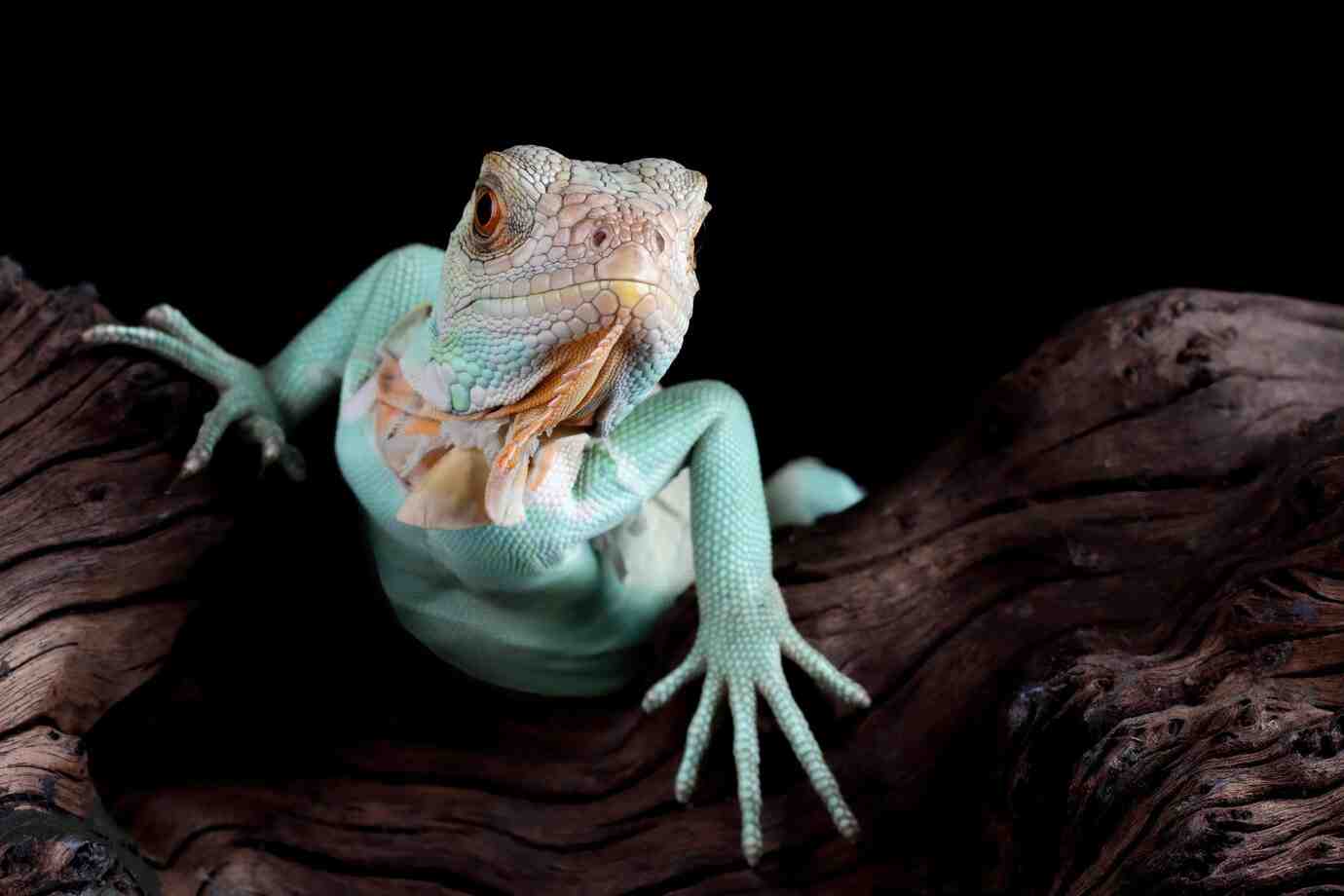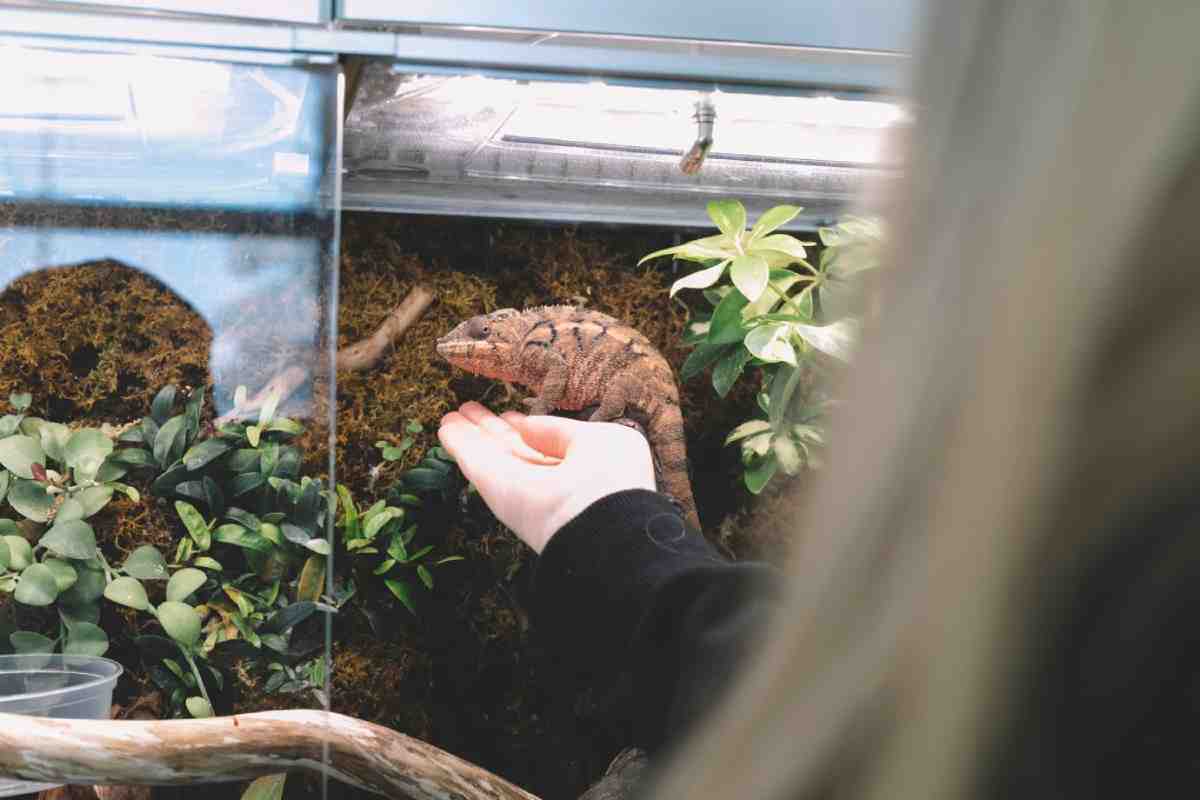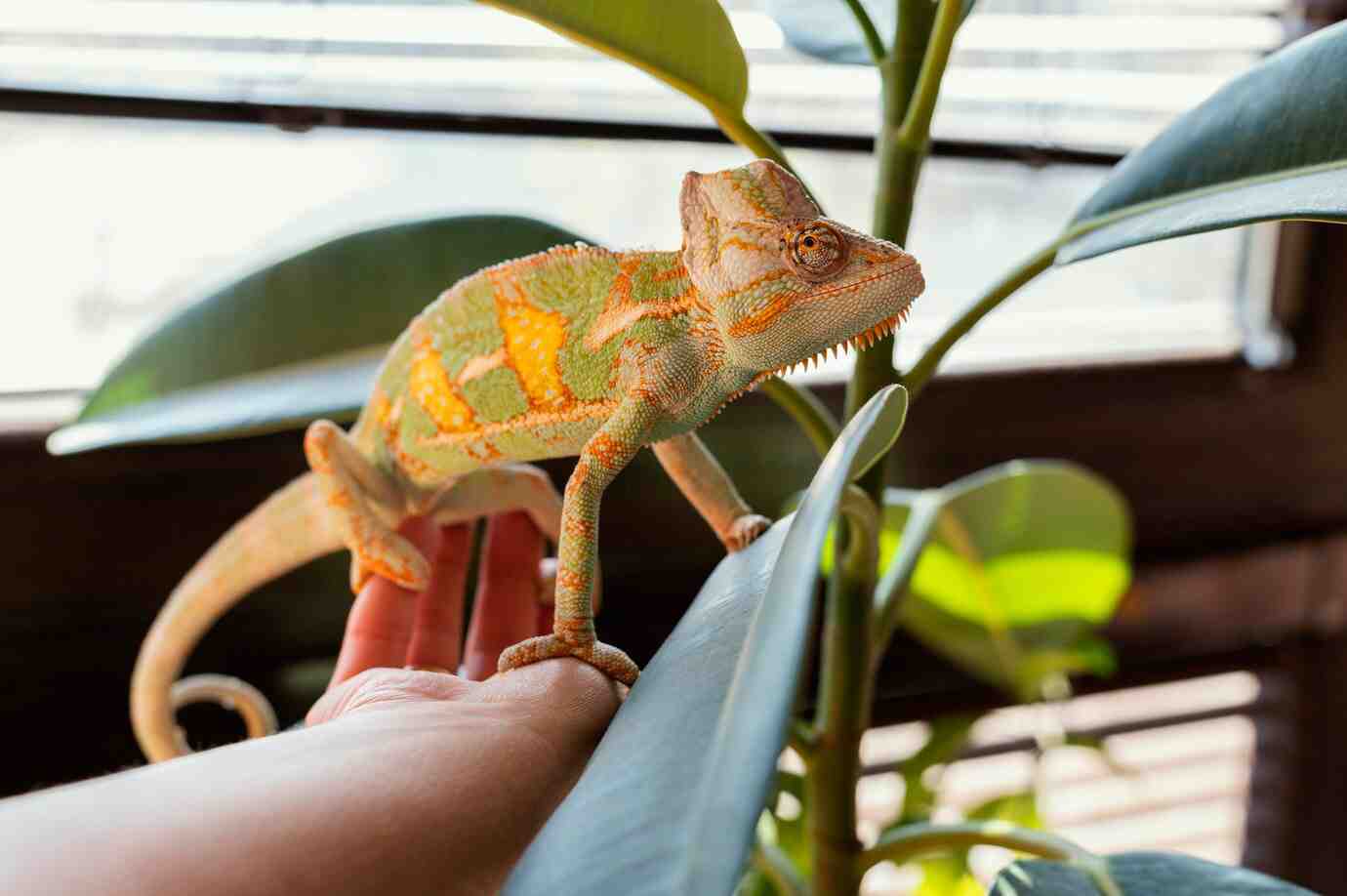
How to Be a Responsible Exotic Reptile Owner
Exotic reptiles are fascinating pets. Whether it’s a slow-moving tortoise, a curious gecko, or a striking snake, these animals bring a piece of the wild into our homes. But with their beauty comes responsibility. Reptiles are not low-effort pets — they need specific care, attention, and long-term commitment.
This guide will walk you through the key principles of responsible reptile ownership. From ethical sourcing to proper care, we’ll explore what it means to provide safe, respectful, and ethical exotic pet care that puts reptile welfare first.
Why Responsibility Matters in Reptile Keeping

Reptiles live very differently from dogs or cats. They have unique environmental needs, long lifespans, and specialised diets. Mistakes in their care — even small ones — can lead to stress, illness, or even death.
Being a responsible keeper means:
- Understanding your pet’s needs before you bring it home
- Providing a safe, enriched habitat
- Using ethical sources and avoiding harmful trade
- Making a long-term commitment to care
- Educating others about proper reptile care
When you care for a reptile properly, you’re not just keeping a pet — you’re protecting a species and setting an example for others.
1. Do Your Research First
Before buying a reptile, learn everything you can about its species. Don’t rely only on pet shop advice. Read care guides, join online forums, and watch how experienced keepers do things.
Know the basics:
- Ideal temperature and humidity range
- Habitat size and layout
- Lighting needs (especially UVB)
- Lifespan (some reptiles live 20+ years!)
- Feeding schedule and diet
- Behaviour and handling tolerance
Key Questions to Ask Yourself:
- Can I provide the right enclosure and equipment?
- Do I have time for daily or weekly care?
- Can I afford long-term vet care?
- What will I do if I need to rehome this animal?
Responsible reptile ownership starts with informed choices.
2. Buy from Ethical Sources
Avoid wild-caught animals whenever possible. They are often stressed, sick, or poorly adapted to captivity. Buying wild-caught reptiles can also support illegal or damaging trade practices.
Instead, choose:
- Captive-bred reptiles from ethical breeders
- Rescued or rehomed reptiles through shelters or experienced owners
- Trusted breeders who provide care info, health records, and species background
Ethical exotic pet care includes asking questions about where your reptile came from and how it was raised.
3. Create a Safe, Enriched Enclosure
Your reptile’s tank or enclosure is their entire world. It needs to mimic their natural habitat as closely as possible — not just for survival, but for comfort.
Key Elements of a Proper Setup:
- Correct temperatures with a basking area and cool side
- UVB lighting (if needed) and day-night cycles
- Safe substrate that doesn’t cause impaction
- Humidity control for species that need it
- Hides, branches, or climbing space for stimulation
- Clean food and water areas
Even simple additions like natural branches or a moist hide can greatly improve your pet’s wellbeing.
A well-designed enclosure supports healthy behaviour and reduces stress.
4. Feed a Balanced, Species-Appropriate Diet
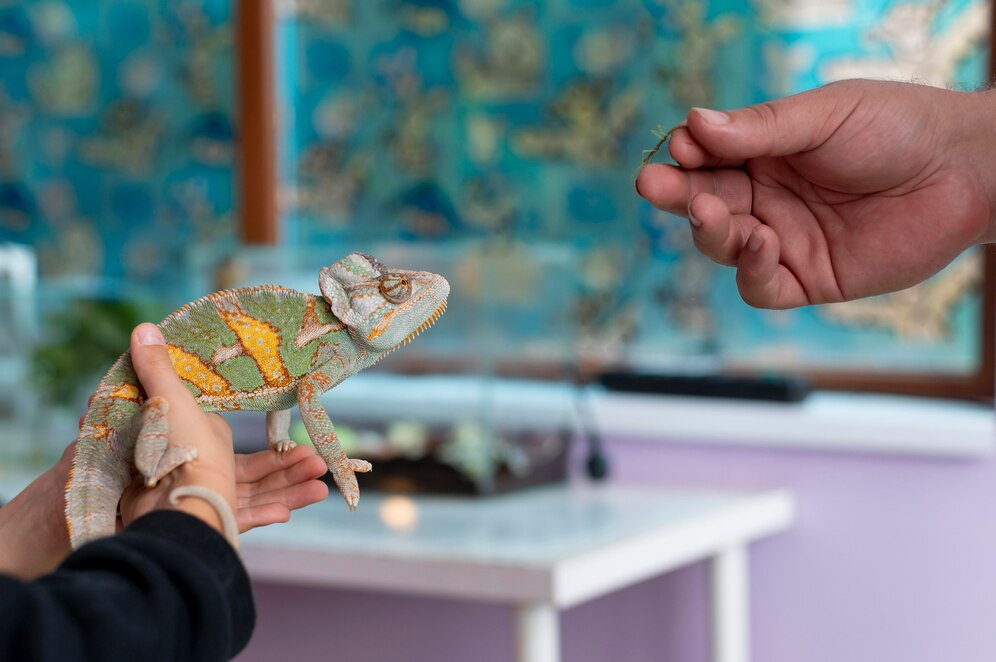
Different reptiles eat different things. Feeding the wrong food can cause nutritional problems or poor growth.
Common Diet Types:
- Insectivores: Need gut-loaded insects and calcium dusting
- Herbivores: Thrive on leafy greens, squash, and safe veggies
- Omnivores: A mix of insects, greens, and occasional fruit
- Carnivores: Eat rodents or whole prey items
Feed fresh food, avoid wild insects, and follow supplement routines to support reptile welfare and long-term health.
5. Monitor Health and Behaviour
Reptiles don’t always show clear signs of illness, so it’s important to know what’s normal and what isn’t.
Signs of Good Health:
- Clear eyes and strong grip
- Steady appetite
- Regular shedding and stool
- Active movement (depending on species)
Warning Signs:
- Not eating for days
- Swollen limbs or jaw
- Lethargy or hiding constantly
- Weight loss
- Trouble shedding
If you notice anything unusual, consult a reptile-savvy vet. Early treatment can prevent serious issues.
6. Handle With Care and Respect
Some reptiles enjoy handling — others don’t. Always respect your pet’s limits. Over-handling can lead to stress, especially in shy species.
Handling Tips:
- Support the full body, especially with snakes or lizards
- Wash your hands before and after
- Avoid sudden movements or loud noises
- Let new reptiles settle for a week or two before handling
Part of responsible reptile ownership is knowing when to leave your pet alone.
7. Plan for the Long Term
Many reptiles live for 10–30 years. Some, like tortoises, may outlive you.
Before bringing one home:
- Make a plan for long-term care
- Set aside savings for vet visits or enclosure upgrades
- Think about moving, lifestyle changes, or future rehoming needs
If You Ever Need to Rehome:
- Never release reptiles into the wild
- Contact rescues, breeders, or local herpetology groups
- Be honest about health and care history
Reptile welfare includes thinking ahead and making sure your pet stays safe — even if your plans change.
8. Keep Learning and Connecting
Reptile care is always evolving. New lighting systems, diet research, and enclosure ideas are coming out all the time.
Stay Informed:
- Follow trusted reptile blogs and YouTubers
- Join local or online reptile clubs
- Attend expos and ask questions
- Read updated care sheets, not just old forum threads
Sharing your journey helps others and keeps the reptile community informed and ethical.
9. Advocate for Better Reptile Care
Many people still see reptiles as “disposable” or decoration. You can help change that.
Simple Ways to Spread Awareness:
- Talk about your reptile’s needs with friends or family
- Correct myths gently (e.g., “No, snakes don’t chase people!”)
- Post care tips on social media
- Encourage others to research before they buy
- Support laws that protect reptiles and prevent harmful trade
The more we share, the more we raise the standard for reptile care everywhere.
Be the Keeper Your Reptile Deserves
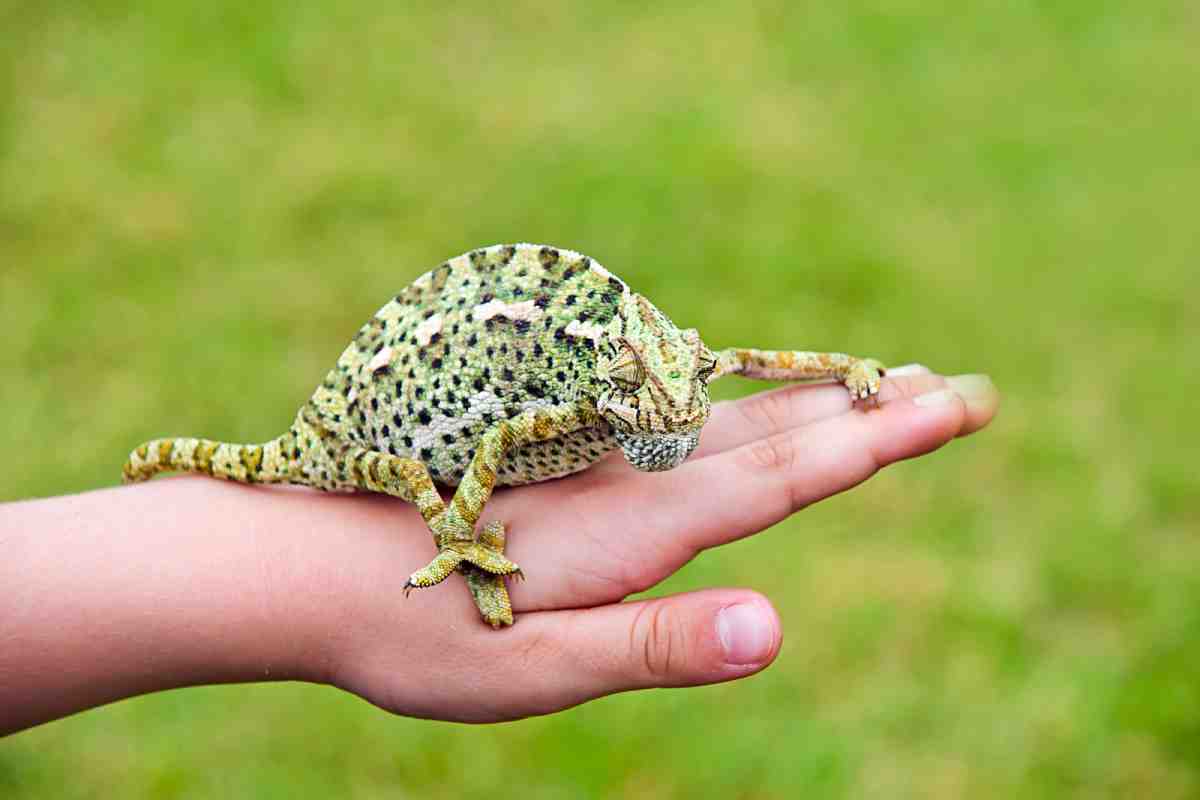
Responsible reptile ownership means thinking beyond just keeping an animal alive. It’s about building a life where your pet can thrive — physically, mentally, and emotionally.
When you practice ethical exotic pet care, you support better standards, protect wild populations, and give your reptile the best possible life. That’s what true reptile welfare is all about.
Explore More: Ball Python Care: Everything You Need to Know

